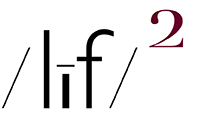book covers ~ note the crumpled BANKRUPTCY banner in store window • (embiggenable)
(embiggenable)
(embiggenable)
AS I MOVE ALONG WITH THE PHILOSOPHY PROJECT /BOOK, I am still trying to come to grips with what the book should be about. During that mental wrestling contest, the only “philosophy” I have come up with, re: why people make pictures, is quite simple (albeit very broad in scope):
Any time, any place, any thing (especially your face). Everyone photographs cuz they like what they see.
No matter under which genre banner a photographer might be toiling- decorative art, fine art, or no art at all-the ubiquitous snapshooters who are simply, without artistic intentions, recording the goings on in their life-I believe it is safe to write that they all like (and photograph) what they see.
Of course, what a photographers “sees” can have a literal and/or a transformative meaning inasmuch as those photographers working under the decorative art banner, along with the ubiquitous snapshooter, are relentlessly and unabashedly wedded to the actual referent depicted in their photographs. Whereas, those toiling under the fine art banner are much more inclined to “see” (and photograph) something that goes beyond the literal visual characteristics of their depicted referent. Thereby causing a change in how the viewer perceives, within the photographer’s chosen framing-and “organization” of line, shape, color, tone, and space-the depicted referent.
All of that written, with either a literal or a transformative picture making intent, I think it safe to write that photographers like what they see cuz, whatever they see or however they see it, they most definitely like it for its potential as fodder for the making of a good picture.
on my way back from the grocery store ~ (embiggenable) - I definitely liked what I saw
